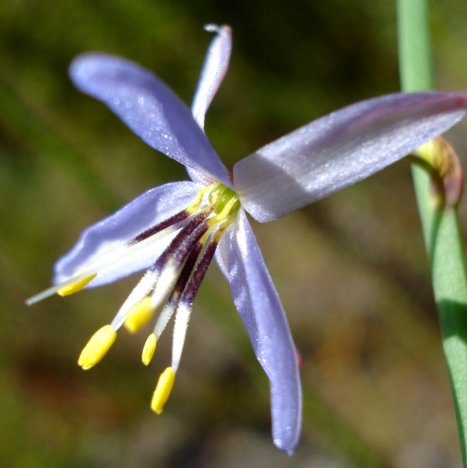Caesia contorta green ovary

Author: Ivan Lätti
Photographer: Judd Kirkel Welwitch
The green, superior ovary of Caesia contorta sits like a semi-buried marble in the base of the flower. The filaments curve around it in their lowest, yellow sections to their respective tepal base points of attachment.
The straight but skew style, whitish translucent here, shows very little of a visible stigma at its tip. When the flower withers, the tepals twist notably. Flowering happens from late spring to early autumn. This one was seen in the Kogelberg early in November.
Caesia seeds, tiny pear-shaped ones with little white arils attached, are dispersed by ants that eat the arils without harm to the seeds (Euston-Brown and Kruger, 2023; Vlok and Schutte-Vlok, 2015; Bean and Johns, 2005; Pooley, 1998; Manning and Goldblatt, 1996; iNaturalist; iSpot).

